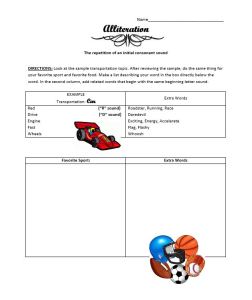April is officially National Poetry Month, but I always read and write poems with my students in December. Class instruction gets interrupted due to holiday performance rehearsals, parties, and various holiday activities. I like to share poems during the holiday craziness because I can work around smaller blocks of time, and we won’t be left hanging at a critical part of the story if we have to put our work down.
This year, I combined a poetry lesson with one of my favorite craftivities– haiku tunnel poems. The students learned about haiku poems, and we created a finished product that kids took home to their parents for a holiday gift. I even made a tunnel poem to give to my teaching partner with a picture of us from our school Halloween carnival.
 I asked students to bring a 4×6 family photo, landscape orientation, to school. The photo could be of any family member (and that included pets) and show any special memory whether it was a recent event or something from several years ago.
I asked students to bring a 4×6 family photo, landscape orientation, to school. The photo could be of any family member (and that included pets) and show any special memory whether it was a recent event or something from several years ago.
Students generated word lists that related to their chosen picture using THIS HANDOUT. When they completed their personal word list, they counted the syllables in each word and wrote the syllable count next to the matching word. Using the haiku formula for the 3-line poem (5 syllables, 7 syllables, 5 syllables), students moved words from their lists around until they created a haiku poem. The finished tunnel poem has 4 frames layered on top of the photo. The first frame displays a title for the poem. The next 3 frames display the haiku– one line at a time– across the top.
CLICK HERE to go to my post about foldable booklets with step-by-step directions for making the tunnel poems. When I made these with students in the past, we used postcards as the back panel. This time we used personal photos to make it more meaningful. The photos were flimsier than postcards (especially if they were printed from home on printer paper), so I attached each photo to a 4×6 notecard to give the photo a little more stiffness.
Basically, you need lots of 4×6 notecards and a paper cutter to cut the side hinge pieces evenly. You will also need glue, scissors, colored pencils or markers, and lots of patience. I recommend training your early finisher students in tunnel poem construction and let them help other students. Spatially, it is difficult for some students to comprehend how to layer the frames and attach the hinges to the backs of each frame. It is easier to fold the side hinges if your photos are landscape orientation, but it is possible to make the tunnel poems with a portrait (tall) orientation.



















